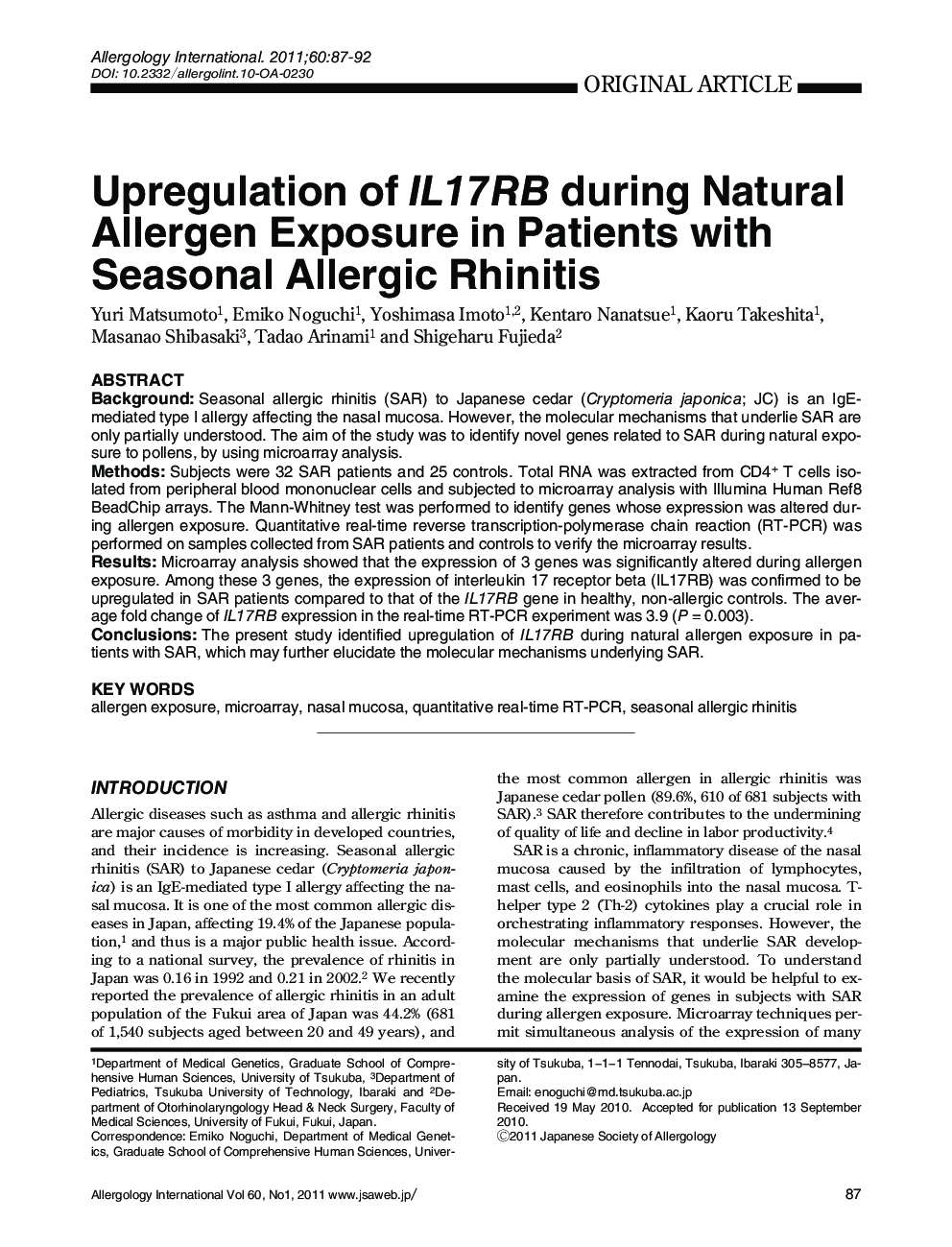| Article ID | Journal | Published Year | Pages | File Type |
|---|---|---|---|---|
| 3340966 | Allergology International | 2011 | 6 Pages |
ABSTRACTBackground: Seasonal allergic rhinitis (SAR) to Japanese cedar (Cryptomeria japonica; JC) is an IgE-mediated type I allergy affecting the nasal mucosa. However, the molecular mechanisms that underlie SAR are only partially understood. The aim of the study was to identify novel genes related to SAR during natural exposure to pollens, by using microarray analysis.Methods: Subjects were 32 SAR patients and 25 controls. Total RNA was extracted from CD4+ T cells isolated from peripheral blood mononuclear cells and subjected to microarray analysis with Illumina Human Ref8 BeadChip arrays. The Mann–Whitney test was performed to identify genes whose expression was altered during allergen exposure. Quantitative real-time reverse transcription-polymerase chain reaction (RT-PCR) was performed on samples collected from SAR patients and controls to verify the microarray results.Results: Microarray analysis showed that the expression of 3 genes was significantly altered during allergen exposure. Among these 3 genes, the expression of interleukin 17 receptor beta (IL17RB) was confirmed to be upregulated in SAR patients compared to that of theIL17RB gene in healthy, non-allergic controls. The average fold change of IL17RB expression in the real-time RT-PCR experiment was 3.9 (P = 0.003).Conclusions: The present study identified upregulation of IL17RB during natural allergen exposure in patients with SAR, which may further elucidate the molecular mechanisms underlying SAR.
